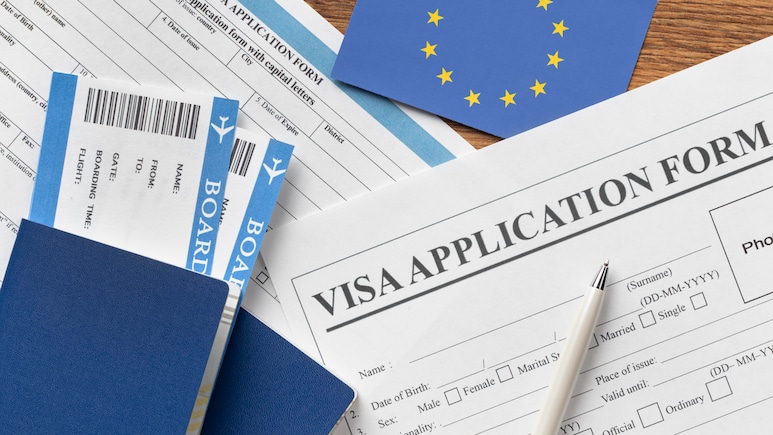
Gone are the days when your Schengen visa used to come as a sticker in your passport. In a historic shift, the European Union (EU) is saying farewell to the traditional Schengen visa sticker, replacing it with a secure digital barcode. And this is not the only change Indians and other travellers heading to Europe would experience.
This comes after European Union foreign ministers adopted a change to shift the process of applying for visas to visit the Schengen area to an online platform in November 2024.
Digital Schengen Visa: What Has Changed
The European Union officially decided to pull out the traditional Schengen visa sticker and replace it with a digital barcode in June 2023. The aim of digitalising the visa was to make procedures more tech-savvy. Officially referred to as a "secure 2D barcode", EU is growing toward digital innovation.
It is one of the biggest overhauls to the Schengen visa system in decades. This step will make the security tighter, processing faster, and provide a fully digital travel experience. Upon arrival at the border, travelers will scan the barcode, which links directly to a centralized EU visa system, providing immigration officers with immediate access to visa validity and personal data.
The EU had issued 70,000 digital Schengen visas for individuals attending the 2024 Paris Olympics as a trial. Instead of a sticker, the visitors got a digital barcode.
According to the official press release, the digital Schengen visa will allow travellers to upload documents, pay visa fees online, track application status and receive a digitally signed barcode visa.
People visiting Europe on a Schengen visa will need to submit their biometrics in person the first time, but frequent travellers will find it faster and seamless.
New Digital Border Controls: EES and ETIAS
The EU is introducing two new border control systems to strengthen security and modernise travel procedures:
- The Entry/Exit System (EES), set to launch in October 2025, will replace traditional passport stamps with biometric checks, including fingerprint and facial recognition.
- The European Travel Information and Authorisation System (ETIAS) is expected to go live by 2026. It will require visa-exempt travellers, such as those from the US or UAE, to complete an online application before entering the Schengen Area.
The Digital Schengen Visa will become fully operational for all EU member states by 2028.
What Does It Mean For Indian Travellers
Indian travellers will experience several benefits, including:
- Digital visa will streamline entry through biometric e-gate access.
- The aim is to reduce the need for paperwork, which aligns with the Digital Scheme of the EU.
- The process will now be faster, especially for frequent travellers.
Track Latest News Live on NDTV.com and get news updates from India and around the world

